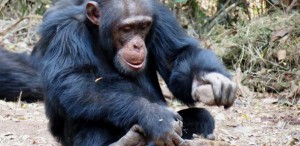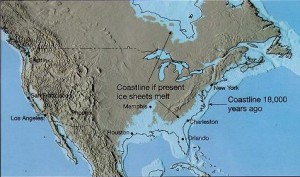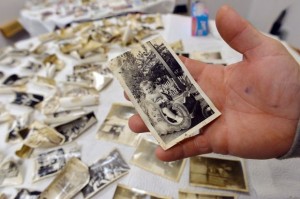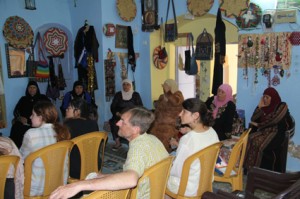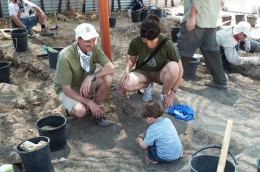We’ve been trained and taught to think that tools and our dependence on material culture stems from a fundamental need for them in order to survive. This perspective fails to recognize other factors that influence tool use, creating a misleading picture when applied to the material aspects of culture. Recent studies challenge this idea that we depend on tools for survival. Dr. Kathelijne Koops of the University of Cambridge, Elisabetta Visalberghi, and Carel van Schaik challenge the assumption that necessity and survival are the “mothers of invention.” She and her colleagues argue that research into tool use by primates should look at the opportunities for tool use provided by the local environment.
Dr. Koops, Visalberghi, and van Schaik conducted studies of tool use amongst chimpanzees, orangutans, and bearded capuchins. The studies revealed that their tool use didn’t increase during times of scarcity, but rather tools were used when there were hard to reach and calorie rich foods available in the environment. This reveal challenges the held notion that necessity and survival governs the development and use of tools. Koops comments, “Our study suggests that published research on primate cultures, which depend on the ‘method of exclusion’, may well underestimate the cultural repertoires of primates in the wild, perhaps by a wide margin.” Their studies explain that opportunity, not necessity, governs tool use. This explicitly recognizes how the environment and landscape are influences on material culture. The previous model that defined tool use based on necessity illustrates tool usage solely dependent on survival, whereas this new model illustrates tool usage dependent on the environment and what the environment is offering the user.
This new model employs historical ecology, the anthropological paradigm that traces the dialectic relationship between human actions and nature. Using the historic-ecological perspective, it is established that the landscape retains the physical evidence of mental activities. In this case, the landscape retains the physical evidence of the development of material culture. Understanding tool usage in this way encourages us to view the environment as people centered, not environment centered. In viewing the environment as a landscape as opposed to an ecosystem, Dr. Koops, Visalberghi, and van Schaik recognize the dialectic relationship between nature and human behavior and how little or minor activities have major, lasting impacts on landscapes.
Their research can also help explain the development of tool use by ancient humans. Once we better understand tool use by ancient humans we can then focus on ways to encourage sustainable tool use by future users. Dr. Koops, Visalberghi, and van Schaik’s research can be applied to modern problems: by studying how primates use tools, it tells us how humans of the past have developed material culture and technology, and by finding the patterns of the past, we can apply them to the present. Their research can be used to find new ways of production, methods, practices, etc. for tool use that support a global effort towards sustainability.
Sources Used:
http://www.archaeology.org/news/2704-141112-culture-tools-environment
http://www.sciencedaily.com/releases/2014/11/141111205906.htm
Sabloff, Jeremy A. “Chapter Three: How Can the Prospects for a Sustainable World Be Improved?” Archaeology Matters: Action Archaeology in the Modern World. Walnut Creek, CA: Left Coast, 2008. Print.
Pictures:
http://www.archaeology.org/news/2704-141112-culture-tools-environment
http://www.gatescambridge.org/uploads/Koops%201.JPG
New Content:
http://www.ncbi.nlm.nih.gov/books/NBK19924/
http://www.lewishistoricalsociety.com/wiki/tiki-read_article.php?articleId=162

